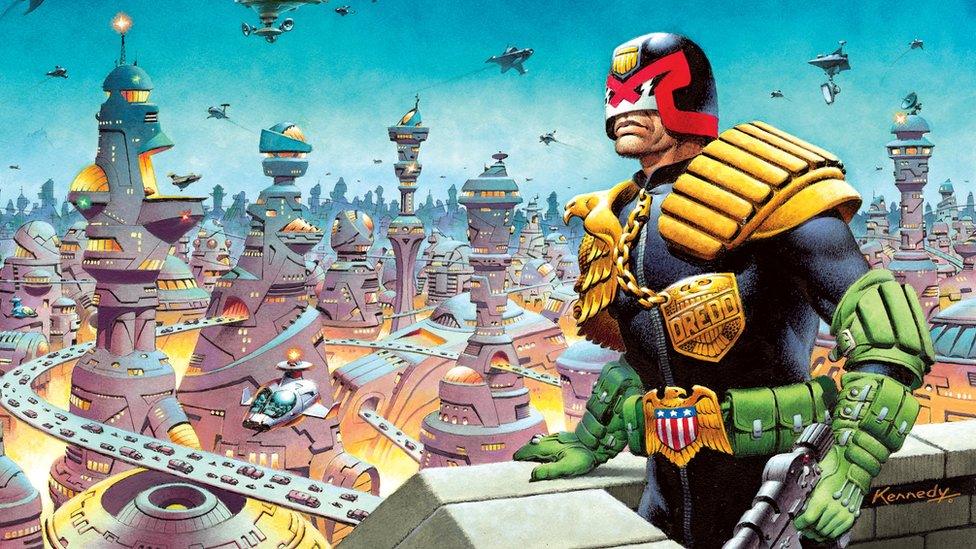Judge Dredd: 2000 AD's futuristic lawman turns 40
- Published
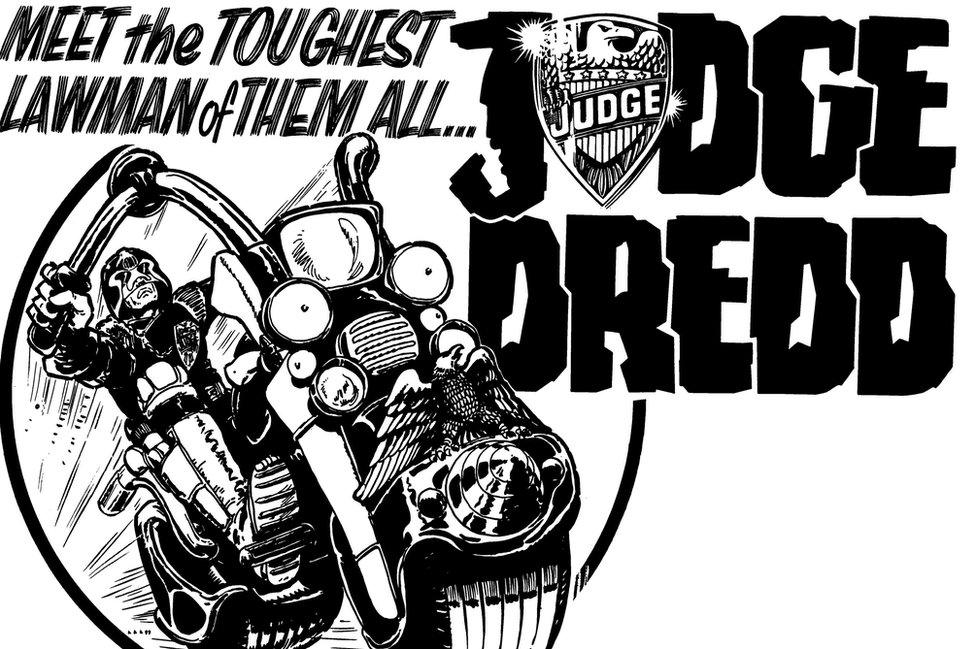
Judge Dredd was launched in the second issue of 2000 AD, and was an instant hit with readers
Grim, gun-toting lawman Judge Dredd was launched on the comic stands in 1977. Now aged 40, the character's satirical take on authoritarian attitudes is as relevant now as ever, argue his writers.
It was in a London office above the Fleet River in March 1977 that Judge Dredd was born.
Outside, the punk scene was at its height. The Sex Pistols and The Clash were storming the charts and young comic readers now had their own anti-hero to cheer.
Drawing on a perceived increase in right wing politics, and inspired by the 1971 film Dirty Harry, Dredd was a no-nonsense 21st Century lawman. He patrolled over a hugely over-populated metropolis in an extremely right wing North America.
"It took the irreverence of punk and put it into hard-edged adventures," says current artist Matt Brooker, who works under the name D'Israeli.
"It was pointing out the emperor's got no clothes, and pulling down the trousers of authority."
2000 AD artist D'Israeli sketches Judge Dredd
In Dredd's first ever appearance in the comic 2000 AD, he tackled a gang of killers who had been ambushing his comrades.
His response? He casually shot two of the men dead and - after punching the third in the face - gave him a life sentence on the spot.
Dredd's unbending, unsentimental approach satirised right wing approaches to law enforcement, while also injecting a large dollop of humour. Instead of being sent to prison, the criminal was marooned on an extremely busy traffic island with no hope of escape.
"There was no way I was going to approve of a fascist cop," original editor Pat Mills insists. "It had to have a satire, so it wasn't saying we were approving of this guy."
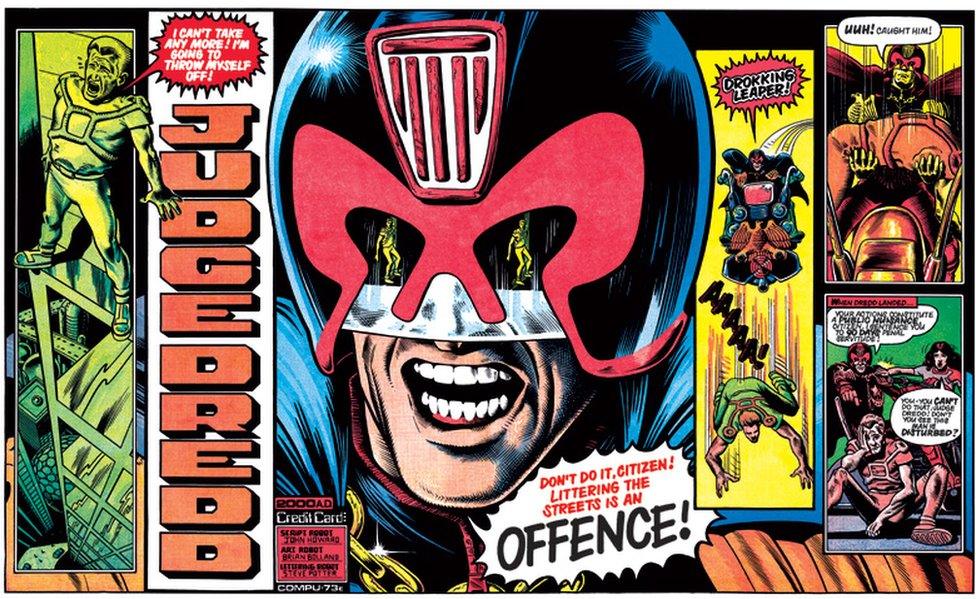
Judge Dredd came down hard on those that broke the law, whatever the crime
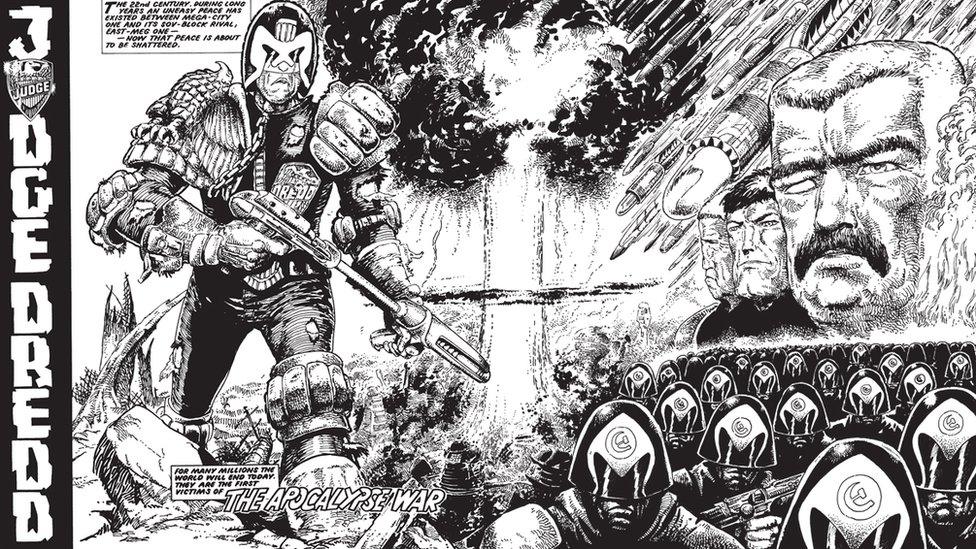
But he was also portrayed heroically, coming to the rescue of his city
The character was created by writer John Wagner and artist Carlos Ezquerra.
Covered head-to-toe in body armour, his face has never been shown in 40 years, remaining concealed beneath a mask.
With the combined powers of a police officer and judge, he hands out sentences for everything from littering to murder, with the result that sympathetic characters are often unfairly treated.
But Dredd lives in Mega-City One, a chaotic and crime-ridden city which the writers treated as a character itself.
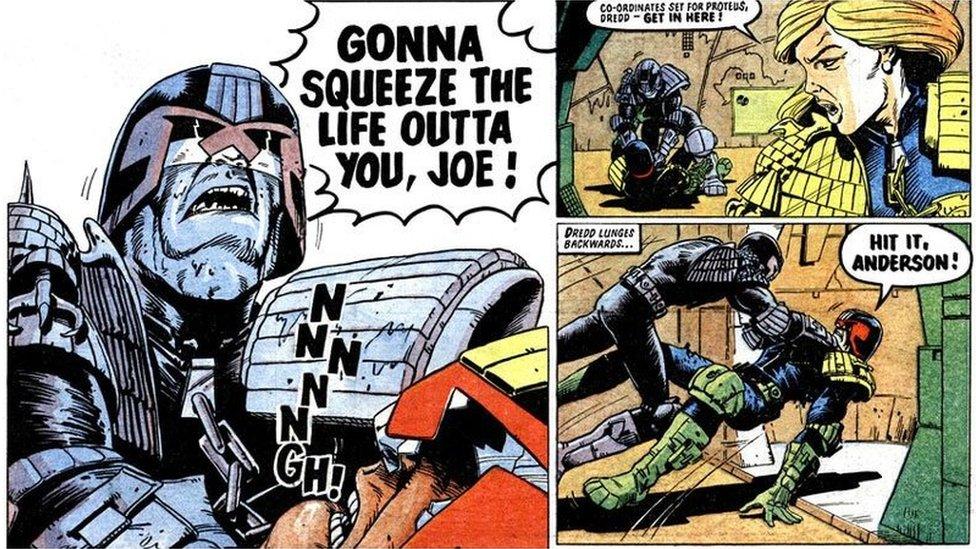
Steve Dillon, who died in 2016, was one of Judge Dredd's most celebrated artists
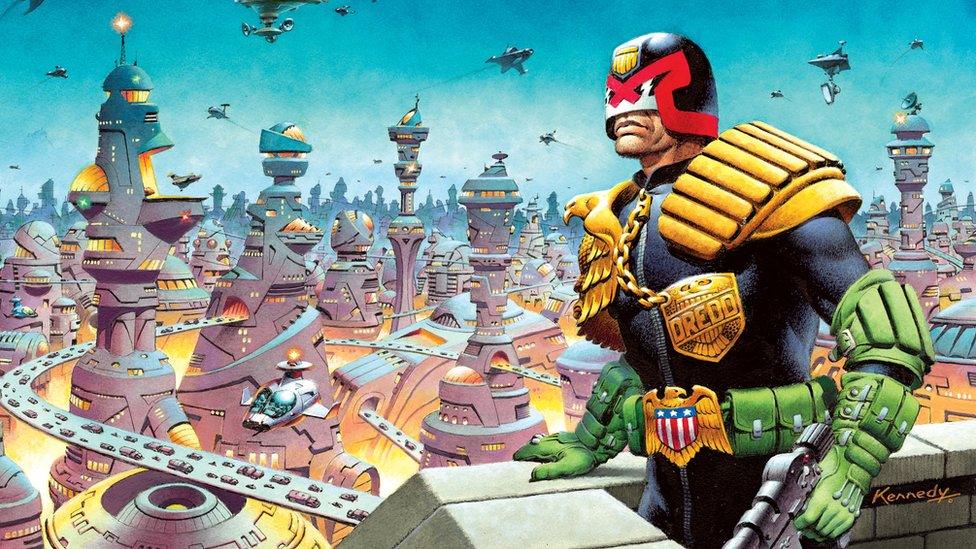
Mega-City One is an over-populated metropolis that survived a nuclear war
"Mega-City One had 800 million inhabitants, which would be a major job for any police force to look after, so it was an excuse for the judges to be like that," says Alan Grant, one of the strip's early writers.
"He was a heroic fascist cop who had no sense of humour himself, but the stories were liberally laced with humour."
"It was largely anti-authority, and that was what drew me to it, because I've always had a strong bias against authority," he adds.
"We tried to mix fascism with black humour. It paid off in terms of reader loyalty.
"We ran a survey and asked 'Do you think Dredd's too heavy-handed?' and 90% of readers said he wasn't heavy-handed enough, so we went with that.
"He's a very, very right wing policeman, in a very, very right wing society."
A playground in which to conceive outrageous scenarios, Mega-City One featured fashion-conscious citizens deliberately making themselves ugly via plastic surgery, while others were gigantically obese, only able to get around on wheels.
Meanwhile the city's massive and violent housing blocks were often named incongruously, after people like Enid Blyton, Frank Zappa, or Betty Crocker.
According to Dan Abnett, who has worked on the comic since the 1990s, writing it is a "tricky balance".
"There's a very fine line to walk between making it very action-orientated and exciting, but also to retain the essential satire.
"The greatest stories over the years have acknowledged the mockery of American society and excess."
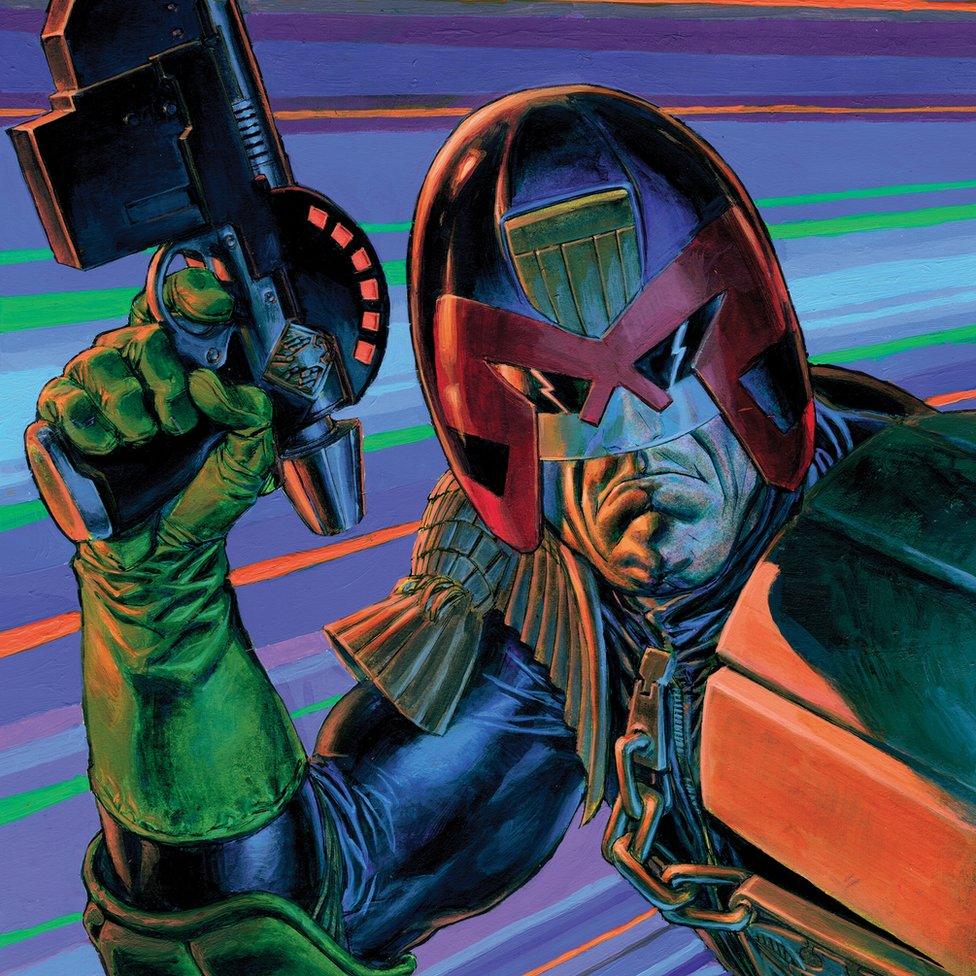
Dredd: A 'very, very right wing policeman, in a very, very right wing society'
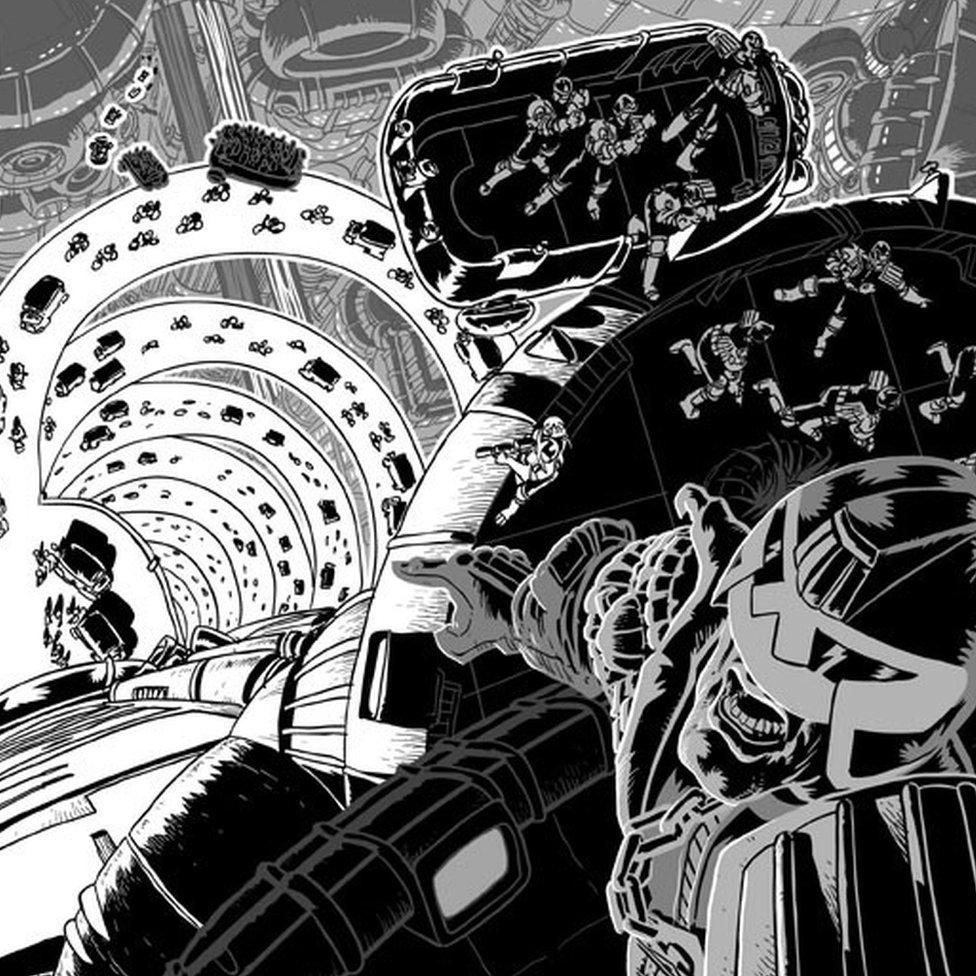
For artist D'Israeli, the key to understanding Dredd's character is through the city he lives in
Dredd's adventures are now overseen from the Oxford-based computer games company Rebellion, which took over the publication in - appropriately - the year 2000.
Current editor Matt Smith says writers were "looking at news reports, coming up with a satirical version, and transplanting it into the future".
"Dredd is part of a totalitarian system in which democracy has been sidelined for the sake of order and rule," he adds.
"He's the villain in lots of ways. But he's the guy you want on your side when the criminals turn up, so he's very complex, and that makes it an interesting strip to read, and is part of its success."

Predicting President Trump
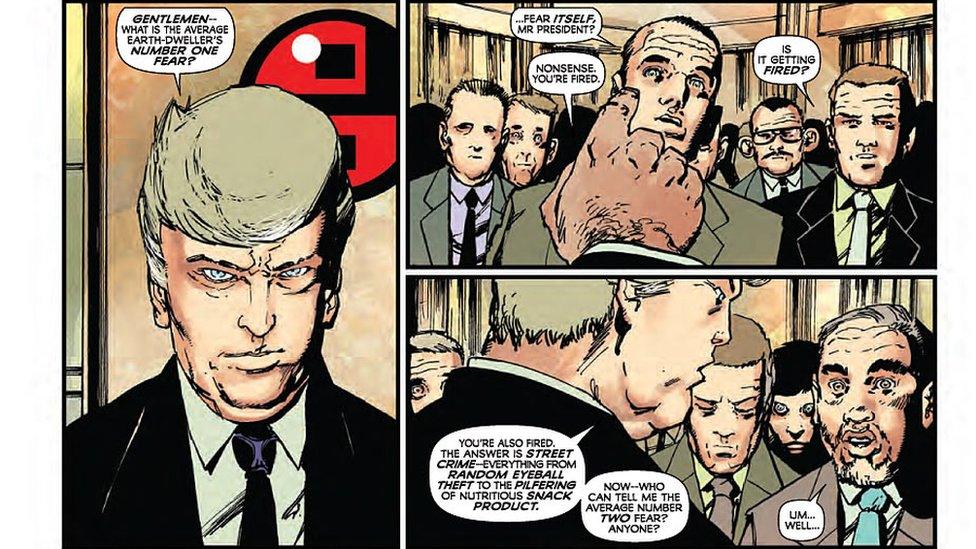
A 2000 AD story called 'The Day the Zombo Died' predicted Donald Trump as president
The makers of 2000 AD, the comic anthology where Judge Dredd strips appear, have got several predictions right. One of their most notable was casting a certain TV reality star as a future president.
As editor Matt Smith explains, the world of the story in question, published in 2011 as The Day the Zombo Died, was "run by this rubbish government getting everything wrong".
A ruthless President Trump is seen firing members of his staff, similar to the contestants on his hit show The Apprentice.
"That's 2000 AD picking cultural figures and lampooning them, not realising how close to the bone it would end up being," Smith concludes.

Dredd's success later resulted in him getting his own comic, Judge Dredd Megazine, as well as spin-off computer games, books, newspaper strips, and even Royal Mail stamps.
He also made it to the big screen, with portrayals by Sylvester Stallone in 1995 and Karl Urban in 2012.
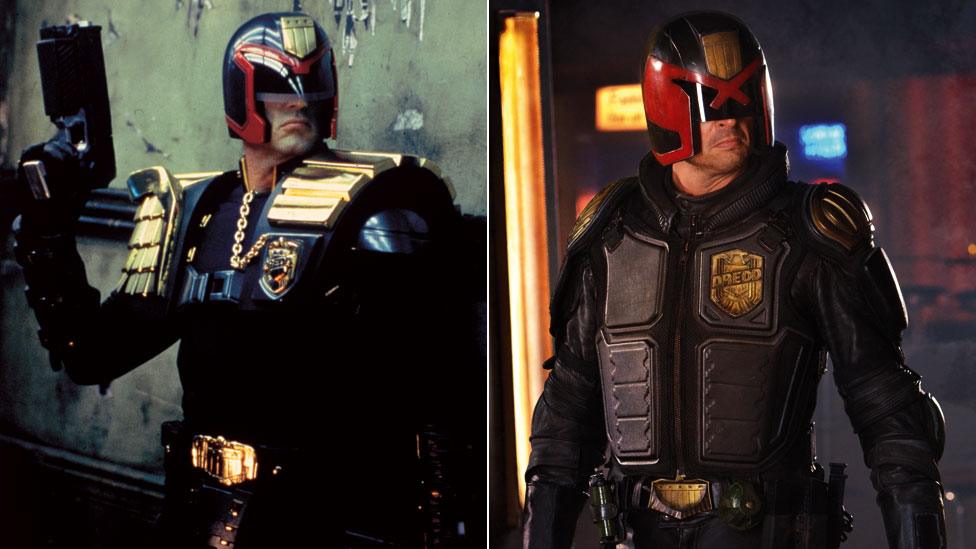
Sylvester Stallone played Judge Dredd in 1995, and Karl Urban in 2012

Original editor Pat Mills believes today's riot police look scarier than Judge Dredd
But while weighty themes of law and order, and the freedom of the individual, chimed with readers when sprinkled with absurdity, neither film set the box office alight.
Grant thinks it's because the world has become "more and more Judge Dredd-like".
"When you see riot police they look like Dredd - anonymous, behind helmets, hard to attack behind riot shields, and with the heaviest duty weapons for fighting back," he says.
"It's horrible to think you're predicting the future, when all you meant to do was write a funny story. To see it playing out in reality is a shock."
Smith says Dredd has "become a shorthand for harsh law enforcement, so it's become a very important strip in that sense".
"Modern cops in certain countries actually look scarier than Dredd," Mills adds.
"The future has not only caught up with us - 2000 AD's world is a little safe compared to the harsh reality."
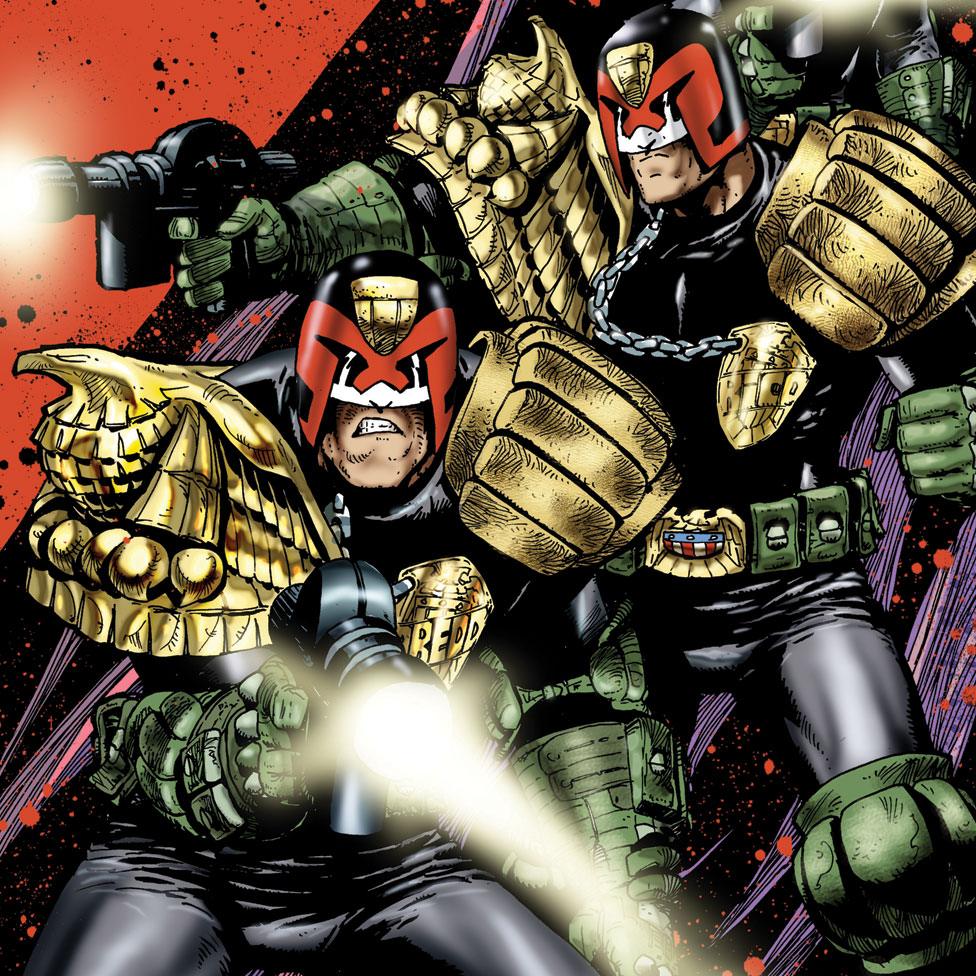
Carlos Ezquerra's design for Dredd was 'absolutely astonishing'

The Class of 2000 AD, and what they did next...

Mark Millar's The Ultimates influenced Marvel's Avengers movies
Several 2000 AD writers and artists have gone on to success in the comics and film industry:
Dan Abnett - Guardians of the Galaxy
Brian Bolland - Batman: The Killing Joke, Wonder Woman
Steve Dillon - Hellblazer, Preacher, The Punisher
Neil Gaiman - American Gods, Coraline, The Graveyard Book, Neverwhere, The Sandman, Stardust
Dave Gibbons - Green Lantern, Kingsman: The Secret Service, Watchmen
Mark Millar - The Authority, Kick Ass, Kingsman: The Secret Service, Marvel: Civil War, The Ultimates, Wanted
Alan Moore - Batman: The Killing Joke, From Hell , The League of Extraordinary Gentlemen, V for Vendetta, Watchmen
Grant Morrison - All-Star Superman, Batman, New X-Men
Frank Quitely - All-Star Superman, The Authority, New X-Men
John Wagner - Batman, Doctor Who, A History of Violence

- Published30 January 2017

- Published10 November 2016
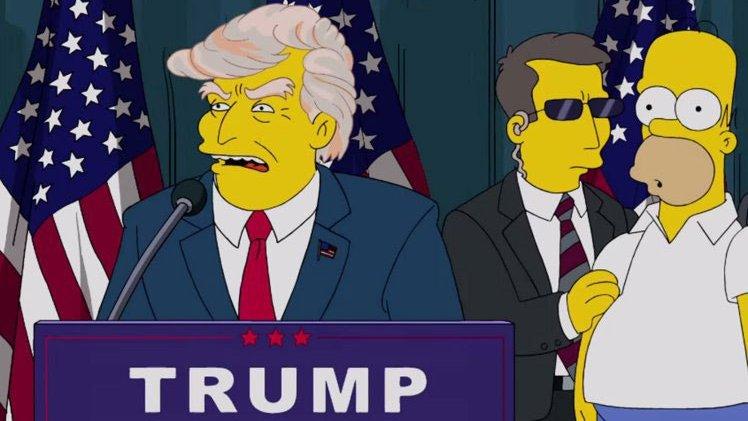
- Published23 October 2016

- Published25 August 2016
